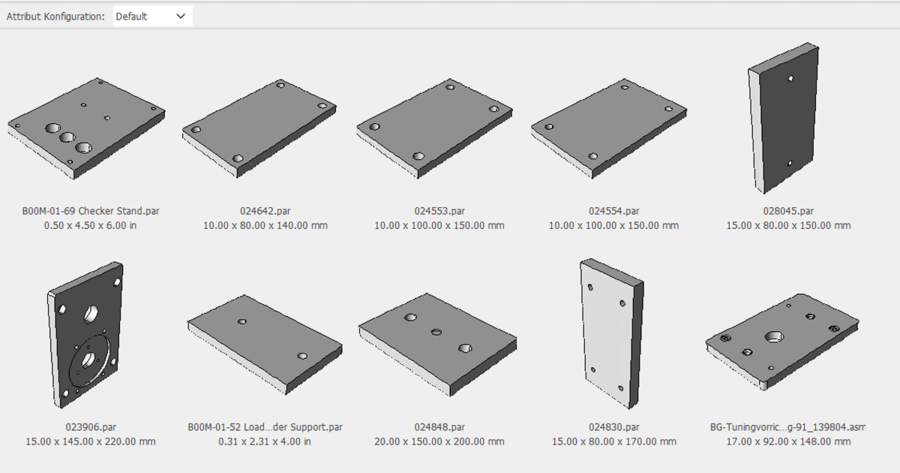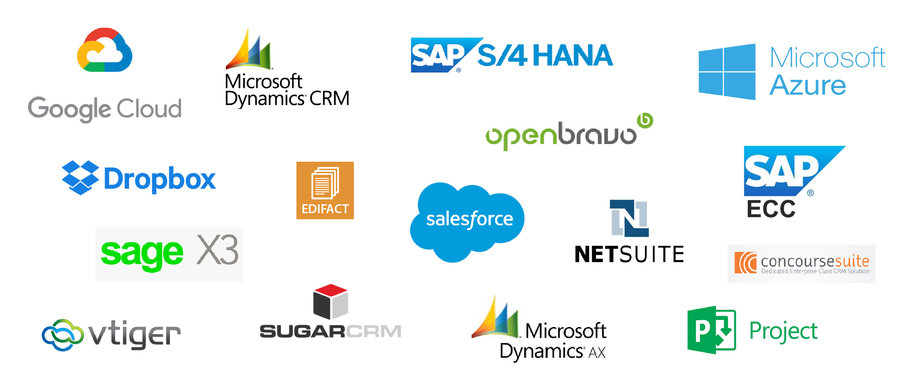PDM Studio
PDM Studio is an open, high-performance solution for managing product data.
The software offers extremely high flexibility without overwhelming the user. Benefit from significantly more efficiency and quality in the entire product development process.

It can also be used to configure and fully automate recurring routine workflows such as sheet metal processing. This not only reduces manual work, but also prevents inconsistent data and the resulting product rejects, as well as many other problems.
PDM STUDIO CLEARLY ADDS VALUE
- Prevents product rejects
- Ensures time-saving information search
- Prevents redundant work
- Provides for efficient staff deployment
- Reduces manual errors
- Ensures accurate information flow
BENEFITS FOR THE COMPANY’S MANAGEMENT
- Must-have tool for batch size 1 production due to high degree of automation
- Ensures time-saving information search
- Fulfilment of demanding project specifications by means of seamless documentation
- Minimisation of non-value added activities
BENEFITS FOR THE USER
- Quick identification of the life cycle phase of a component (e.g., in progress, production release, old part)
- User-friendly overall overview on the basis of where-used list and project structure
- Significant reduction in manual work
- Automation of routine tasks, such as generating PDF documents of drawings or processes
- Easy way of finding similar, already designed components
- Significant increase in performance (factor 5-10), especially for large assemblies
BENEFITS FOR IT

- Efficient work across corporate locations, e.g., in the home office or when collaborating with service providers
- Installation on local server or in the (private) cloud
- Easy, individual and fast integration even into existing infrastructures
- Supports Microsoft Office, Windows Server, Solid Edge, SOLIDWORKS, NX, Inventor and AutoCAD
- Connection to more than 130 applications and data sources (e.g., CRM, ERP, MS Office) possible
- Access control to information and features through central user management
- Fast implementation, minimum personnel and maintenance requirements
- High level of acceptance by users due to user-friendly operation
- Full 64bit support
PDM Studio – Standard Modules
PDM Studio is a software solution from practical experience for practical application. The standard version offers you a wide range of functional modules which you can use to control your data any time, anywhere. All features are constantly being further developed in cooperation with users, and additional modules are added on a regular basis.
We would be happy to present PDM Studio to you. All you need to do is make an appointment for a live demonstration, on-site at your location or conveniently via an online presentation.
Overview of PDM Studio – Standard Modules
PDM Studio is designed for maximum interoperability with other applications. It supports, among other things, established CAD solutions such as Solid Edge, NX, SOLIDWORKS, AUTOCAD or Inventor. The functionality of PDM Studio can be used directly from the other application. The CAD integrations are characterised in that the inner structure of fairly complex file relationships is analysed, recorded and made available to the user by PDM Studio. All features are thus immediately available.
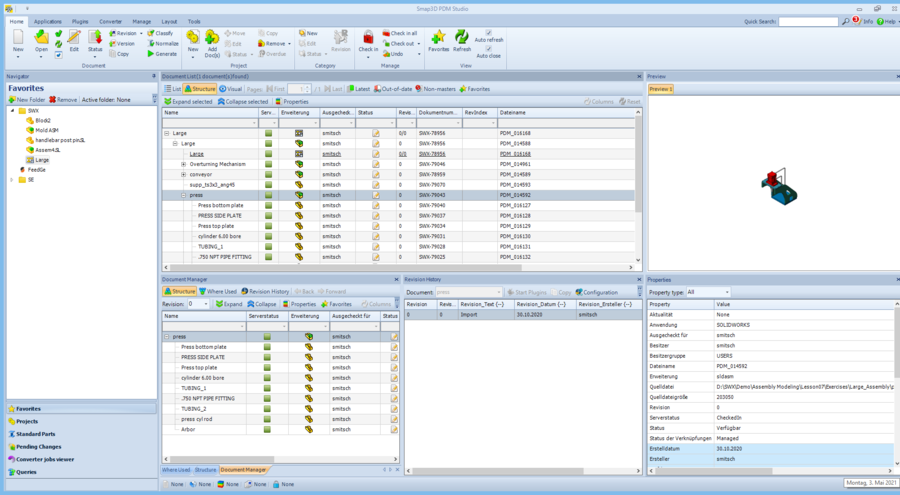
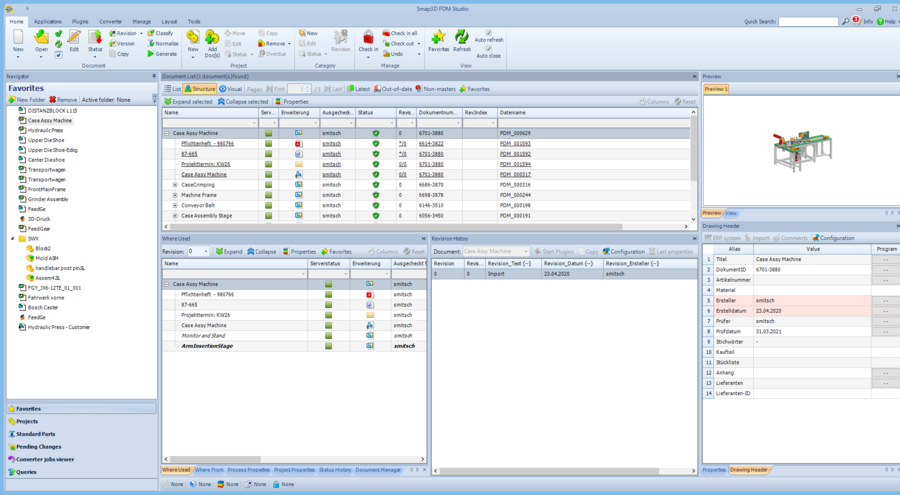
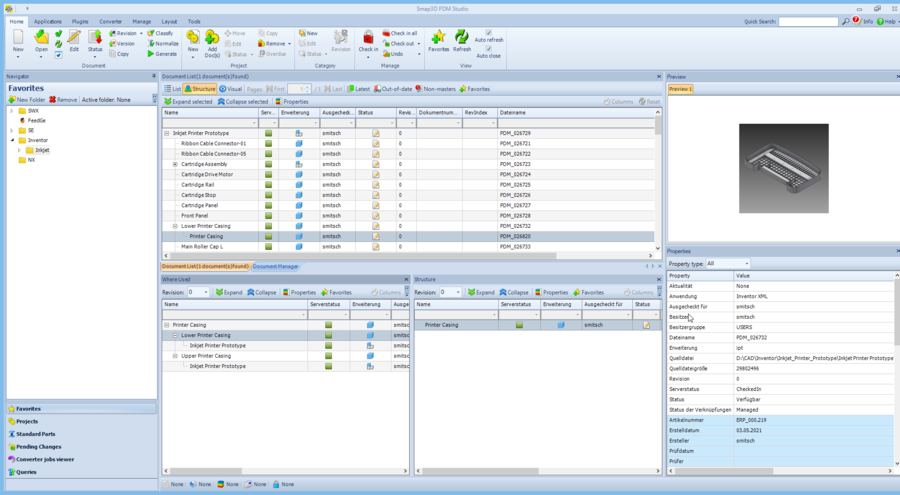
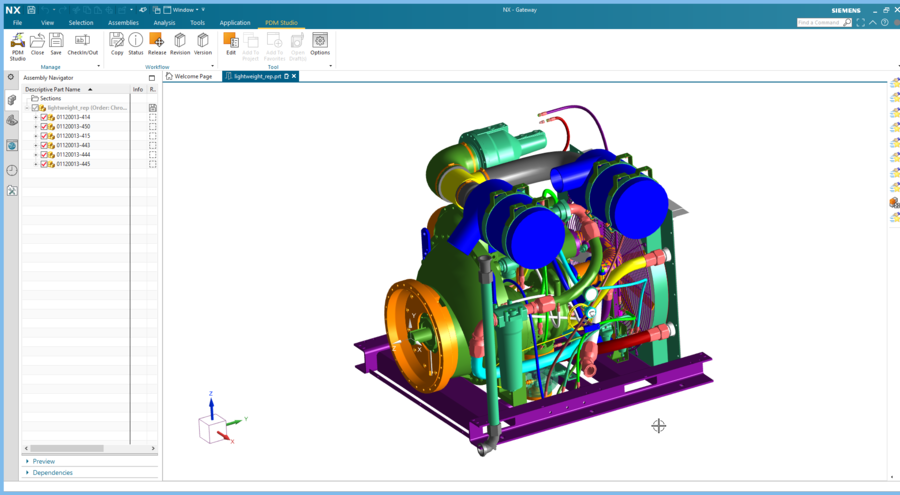
Find out whether and where a component is used. This allows you to estimate what effect a change will have and to decide whether you can continue to develop the component in a compatible fashion or whether the modified component should be further kept on file under a new number. This feature has a great optimisation potential. Easily integrate the existing libraries or create the new ones with little effort. Use the classification tools of PDM Studio and quickly access standard parts via a list of characteristics.
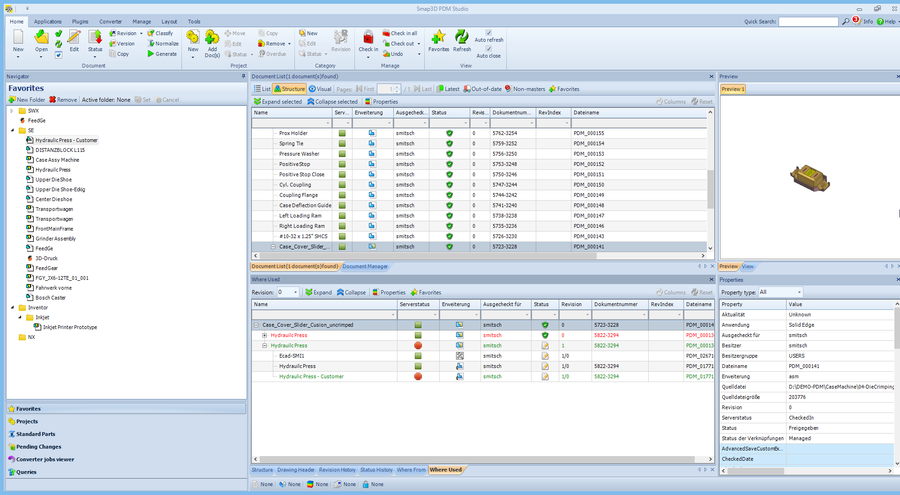
The PDM Studio search feature is a powerful tool that ensures that components are used repeatedly and the new components are not produced and administered unnecessarily. User-friendly filter functions, including preview for visualisation, permit a quick search and finding of parts using metadata, categories and classification. This allows the user to distinguish between purchased and manufactured parts, for example. Documents can also be added using the Drag & Drop feature.

Documents used in several projects often produce redundant data. PDM Studio prevents this by providing a project and folder structure that can be used for repeated storage of documents, even though this is the same document. This combines the filing structure learned by many users with the clarity of a document.
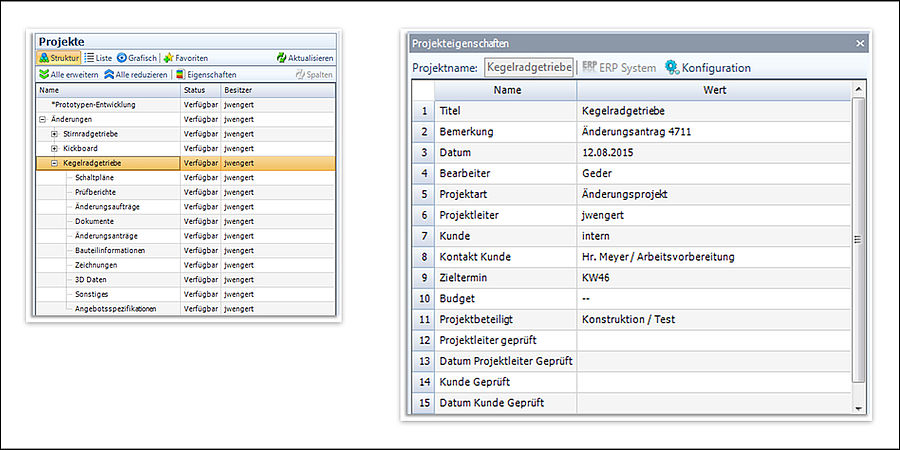
All types of documents (CAD, Office, images, etc.) can – even depending on the type – be divided into freely definable lifecycle phases such as ‘in processing’, ‘in review’ or ‘release’. Each document has its precisely defined status and is monitored throughout all lifecycle phases. PDM Studio also supports the user with a system-supported and secure release process. Access for specific users is controlled based on their document status. Plausibility checks ensure the quality of documents to be released.
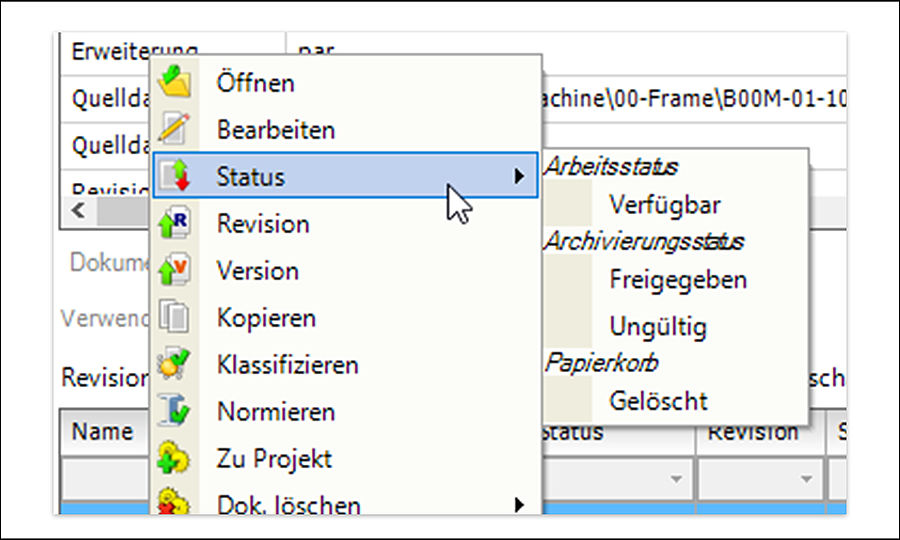
PDM Studio documents all past document states. Earlier versions can be accessed at any time, including their life cycle phase and any existing comments. For example, it is possible to quickly and conveniently determine the condition in which a component was installed at a particular point in time. The mapping of comprehensible and consistent revision history is particularly important for professional quality management. PDM Studio provides wizards for this purpose and enables selective revision even within complex structures.
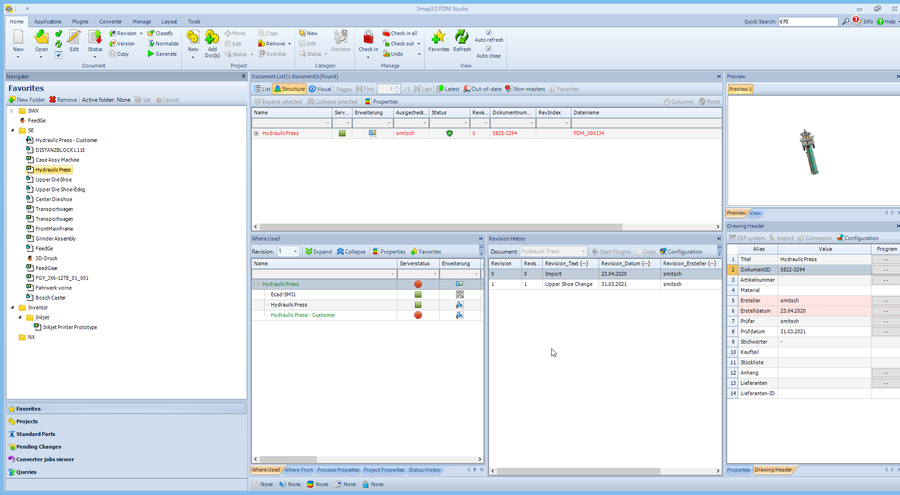
PDM Studio documents all past document states. Earlier versions can be accessed at any time, including their life cycle phase and any existing comments. For example, it is possible to quickly and conveniently determine the condition in which a component was installed at a particular point in time. The mapping of comprehensible and consistent revision history is particularly important for professional quality management. PDM Studio provides wizards for this purpose and enables selective revision even within complex structures.

Each document may include additional information such as supplier specifications, manuals, images or emails. PDM Studio allows you to link all related documents together. All relevant information can be viewed at a glance.


The so-called PartKeeper can be used to export filter results for certain documents to Excel. Their metadata can be conveniently edited and supplemented there. By re-importing the information, even bulk data is quickly and easily updated in PDM Studio via batch processing. PartKeeper is also available as a separate tool if mass data is to be optimised before it is imported into PDM Studio for the first time.
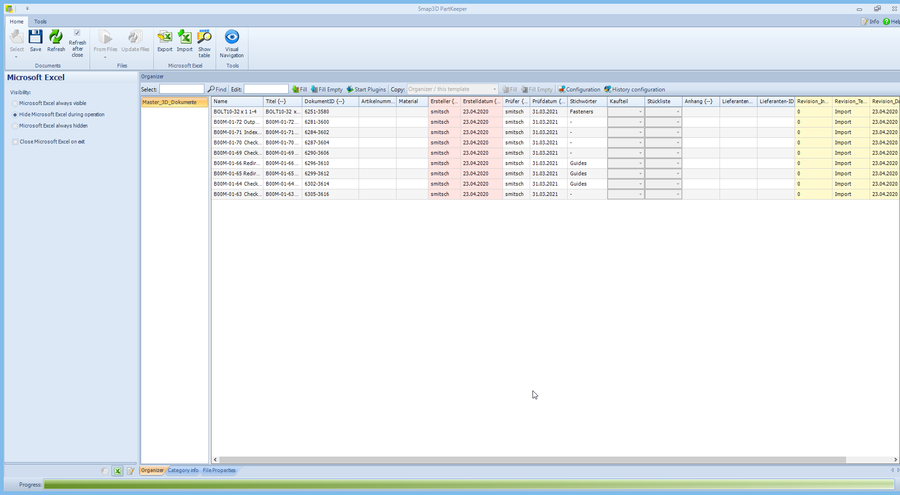
- Mandatory fields that require data input
- Data that is automatically generated by the system, e.g., the user who creates the document
- Permitted selection lists of predefined terms
- External programmes such as data transfer to an ERP
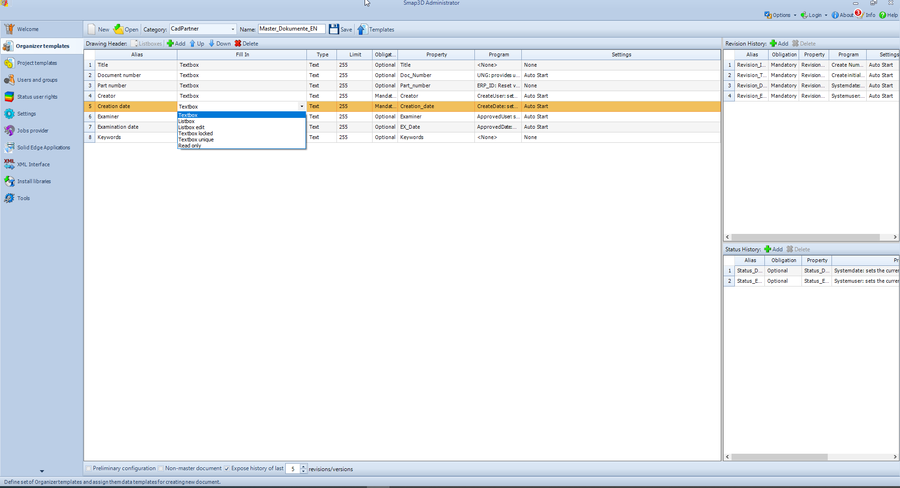
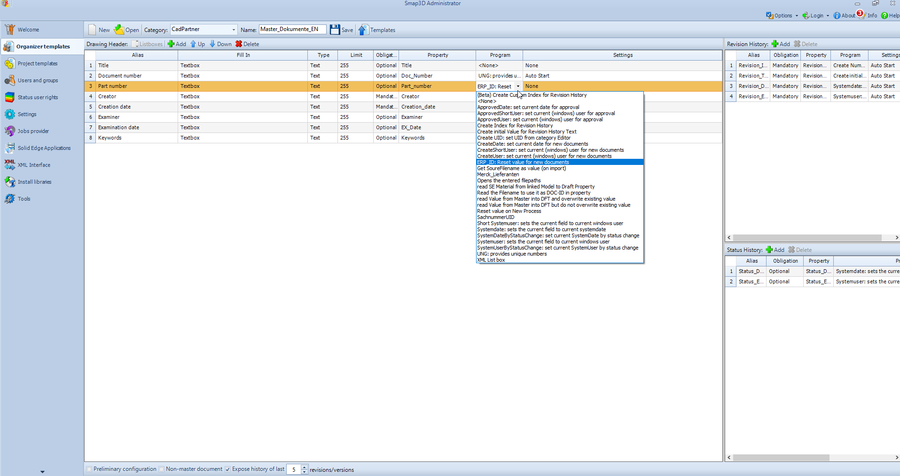
PDM Studio is available in German, English, and Chinese. Additional languages can be easily added using translation tables. This means that PDM Studio can be quickly and easily adapted to local conditions and user acceptance increases considerably.


PDM Studio – Upgrade Modules
The upgrade modules considerably enhance the potential with PDM Studio. By automating routine tasks, you reduce manual effort for your staff and prevent errors. The ERP interface and the integration of Office files aggregate commercial, design and production data in one place. Individual requirements can be implemented via the open interface. We will also be happy to add customised features.
We would be happy to present PDM Studio to you. All you need to do is make an appointment for a live demonstration, on-site at your location or conveniently via an online presentation.
Overview of PDM Studio – Upgrade Modules
The automation of recurring processes relieves your employees of tedious routine tasks, prevents manual errors, creates open spaces and thus increases efficiency and quality. This module has enormous potential for time savings through possibilities such as the automated filling of properties such as part numbers, the provision of neutral formats such as PDF, Step or DXF, convenient copy assistants, the control of printing and plotting jobs or a time-controlled provision of data. Another feature is sheet metal part and production list management. All content is customisable and can be put together graphically without programming skills. No expert skills required.
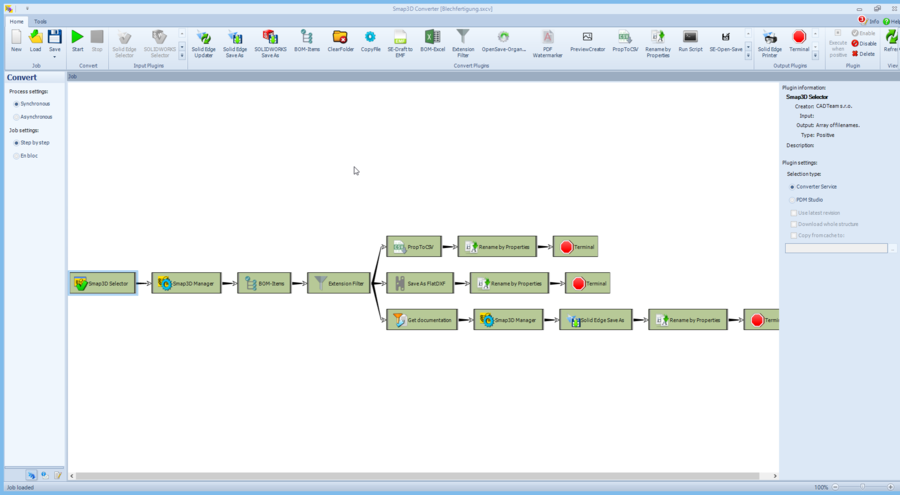
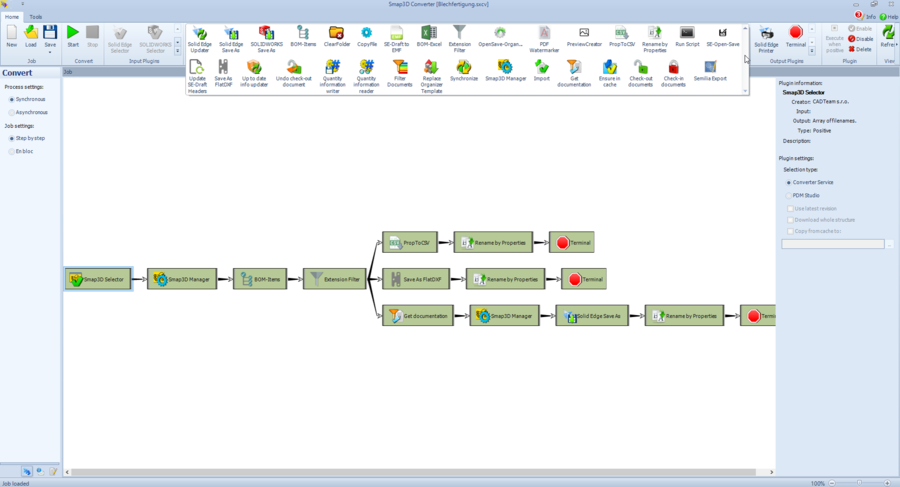
Common processes for all conventional ERP systems can be implemented thanks to the XML-based, flexible ERP interface . Parts and article master data are synchronised bi-directionally. Articles can be created automatically in the ERP. BOM data, including all metadata, is transferred from PDM Studio to ERP. This also enables an early demand assessment of the so-called long-running products. PDM Studio also transfers event-driven CAD data as a drawing and 3D model in neutral format.


PDM Studio can manage not only CAD and CAM data, specifications, change requests, parts lists, etc., both centrally and in relation to each other. The key features and data of PDM Studio can also be integrated directly into the Edit panel of your Office applications such as Microsoft Word or Adobe PDF.
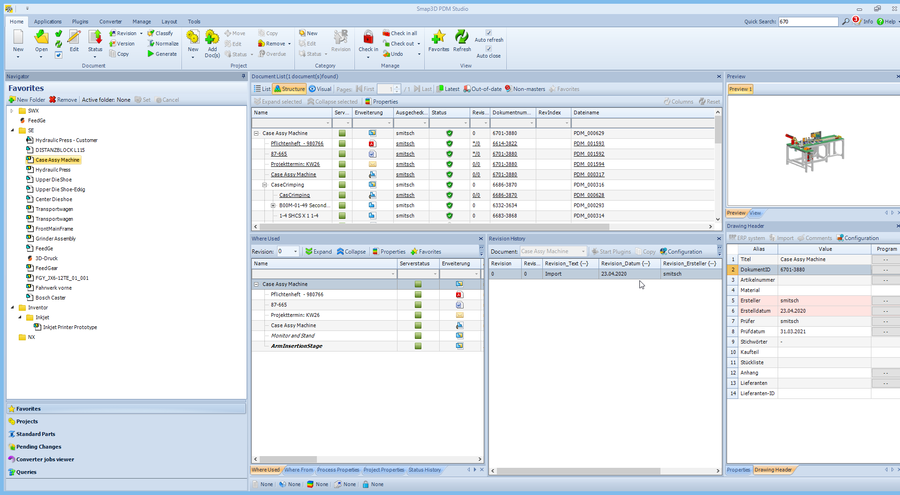
This module is based on the Microsoft .Net standard and can be programmed with the “Visual Studio” development environment. Functional upgrades can thus be implemented quickly and easily according to individual customer requirements. Low adjustment costs over the entire term lead to a high level of investment security.
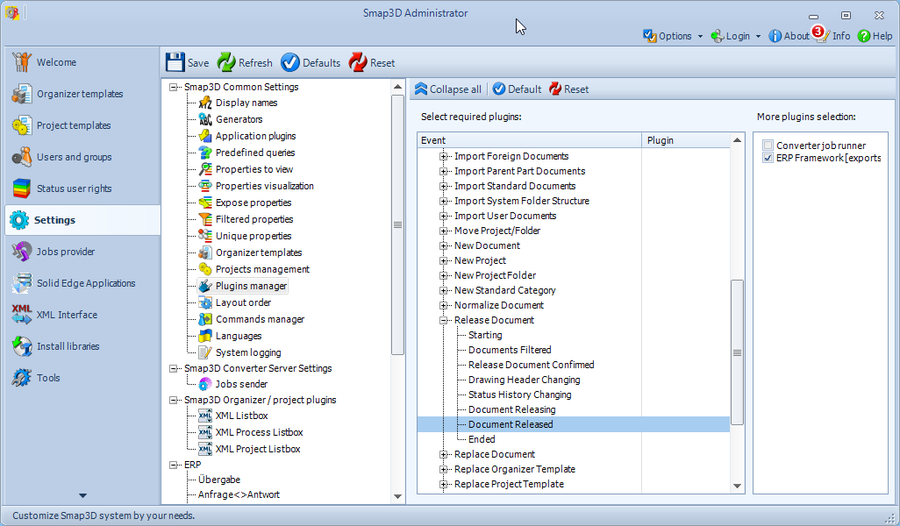
All types of documents (CAD, Office, images, etc.) can – even depending on the type – be divided into freely definable lifecycle phases such as ‘in processing’, ‘in review’ or ‘release’. Each document has its precisely defined status and is monitored throughout all lifecycle phases. PDM Studio also supports the user with a system-supported and secure release process. Access for specific users is controlled based on their document status. Plausibility checks ensure the quality of documents to be released.
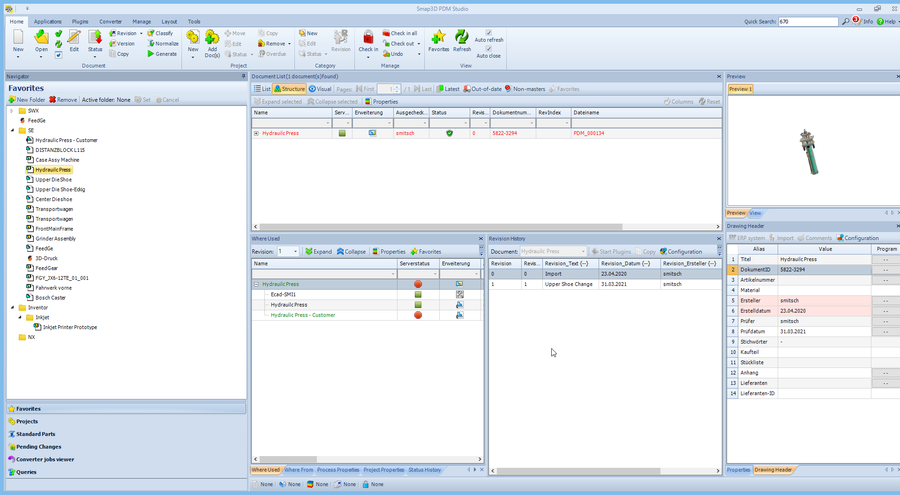
Search for master data directly in PDM Studio using your geometric data. Find out whether this component already exists in the same or similar format and take advantage of the resulting benefits:
- Avoiding duplicates reduces administration costs and effort.
- Better use of the existing data increases productivity.
- Reduced component diversity reduces costs.
- Combining the same or similar parts in production or procurement improves the cost structure.
